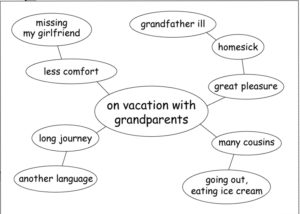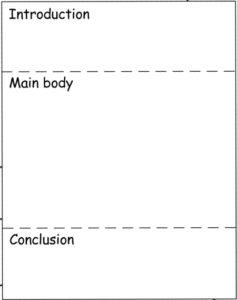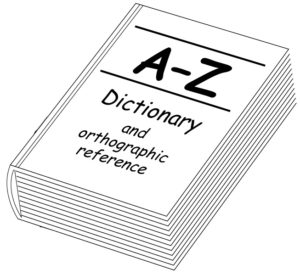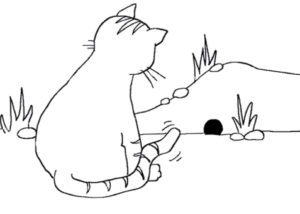General introduction:
In terms of language proficiency, the two worksheets should be suitable for students from the 4th grade on. For younger students, it is recommended to use only certain selected parts which are previously further clarified and explained. Depending on the competence level, this may apply to older students as well (limitation to certain points and previous explanation), at least during the initial sequence.
When introducing the worksheet, it is of great importance to be as clear as possible. Only assignments which the students have truly understood and practiced specifically will help them in their independent work. Pursuant to the introducer’s explanation of the procedures on worksheets, the students should be given their own copy so that they can work with them at home. It would be advisable not to provide them with both copies at the same time, but separately, after a 2–3 week interval, in order to allow the students time to learn and practice with the methods.
Many aspects which are briefly outlined on the worksheets are followed up with more concrete and in-depth suggestions and exercises in other chapters of this publication (#8–12). If these suggestions and exercises were previously explained and practiced in class, it will naturally facilitate the introduction of the worksheets and the students’ understanding of them.
Worksheet WS 1: “Step by step guide to planning, structuring, creating and editing a text”
It is best to practice the six different steps of the worksheet more than once, using actual writing tasks. First, the task should deal with factual texts, i. e. an assignment such as “collect information about a certain city or region (or a person) from our country of origin. Write a text of about 1½ pages in length, then give a 5–10 minute presentation about it”.
The six steps are practiced by means of a theme from literature or an imaginative topic (“we are going to invent a story about our country”, “my most exciting vacation adventure”, “a story of lies”). It is essential that each of the six steps be discussed and practiced. This requires a lot of time, but is well worthwhile as the students learn valuable skills which will help them in future writing assignments.
To simplify the first round, discuss only the titles and subtitles of the six steps in bold. The subsequent bullet points can be reviewed during the second round of practice with the worksheet.
Worksheet WS 2: “Dealing with problems when writing”
This worksheet is intended as an addition to WS 1. Before distributing the worksheet to the students, it is a good idea to review with them any problems they might have encountered when writing, and how to best address them. Then, worksheet WS 2 is read and discussed.
Here too, it is a good idea to practice some of the suggestions with actual examples, and then to discuss the students‘ experiences with them. This deepens and consolidates learning and contributes to the students‘ ability to use the worksheets completely and independently later on.
WS 1 – Planning, drafting and editing a text step by step
Worksheet for students
Step 1: Find good ideas for your topic!
Possibilities:
- Take a sheet of paper or several small pieces. Write down anything that comes to mind about the topic. You may write the notes in the school language if it is easier for you.
- If you have time, discuss the topic with several people, and write down their ideas.
- Create a mind map or a cluster, if you are already familiar with these methods.

Step 2: Organize your ideas, plan the structure of your text.
- Look through your notes and pieces of paper. Cross out the ideas you cannot use.
- Take a sheet of paper and divide it into three sections: introduction/overview – main part (large field!) – conclusion/summary.
- Write your ideas in the appropriate area. Consider what might have been omitted and include it!
- Continue working on this step until you know more or less what your text/story will include.
- Think also about illustrating the text (on paper, illustrated, by computer …)

Step 3: Write a first draft of the text.
- Write the text
- Read through your text. Is the structure ok? Do you already want to improve or change any words, forms or sentences?
Step 4: Find an attractive title and beginning.
- With a good title, you can capture the attention of your readers or listeners. “Help, I am drowning!” sounds more exciting than “My vacation adventure”.
- The same applies for the first sentence or paragraph of the text: here you can create interest and intrigue. In a story, this can be effected with a surprising and interesting beginning; with factual texts, it requires clear and factual information.
- With longer texts and presentations, it is important to use clear and informative subtitles. These help the reader retain an overview.
Step 5: Edit the first draft.
- Ideally, this occurs in pairs or in groups of three in a “writing conference”. This way you can help and advise each other. However, you can also edit the text by yourself. The following questions should help you with your editing efforts:
- As a whole, is my text interesting and understandable? What do I need to make it clearer? What is good or not so good?
- Did I keep to the topic?
- Does my text have a clear structure (introduction/overview, main body, conclusion/summary); is the structure clear?
- Did I avoid straying from the theme?
- Could I rewrite the title of my text to make it more interesting and exciting, or so that it provides clearer information about the content?
- Does the text begin with an interesting and informative sentence that makes the reader want to keep reading, or could it be improved?
- Are the sentences understandable and grammatically correct (word use, syntax, tense)? Underline any uncertainties and discuss them with the teacher or someone else who would know.
- Have I used clear, concise vocabulary without excessive repetition, and checked the spelling with a dictionary?

Step 6: Design your final draft of the text.
- Make sure that the design of your text appeals to the readers or the listeners!
- Also experiment with new visual forms (pictures, or as a collage; on the computer; as an audio text/script, etc).
WS 2 – Dealing with problems when writing
Worksheet for students
This page shows you how you can solve some of the most frequent problems when writing a text.
- When you have no ideas about what to write, or you have difficulties with planning and organizing your text, then look at worksheet WS 1 again!
Problem 1: I have difficulties writing in my mother-tongue
- When collecting ideas and planning your text, you may also use words in the school language (i. e. German), if that makes it easier for you.
- When you have trouble with the dialect and correct form of the written language in your mother-tongue, write the first draft as best you can. Then discuss your draft with your teacher or someone else who is good at writing the language. Have them explain to you what changes are needed and why.
- Perhaps you can get the teacher to allow you to write a short text (which should be as correct as possible) or, for example, you can rewrite the first five sentences as perfectly as possible.
- You should definitely use a dictionary to check the spelling in your language.
Problem 2: I’m unable to find an exciting or attractive beginning for my text.
- It is important that you have an interesting title even before you write the first sentence. Presentations and longer texts should be structured with subtitles.
- There should be a short content overview with factual texts or presentations. This helps the readers or listeners better orient themselves.
- A story or a presentation of an experience can also begin with a short overview: “I am going to tell you how I … “, “My story is about …”.
- A story can also start “in the middle”, which can sometimes be very exciting: “I lay on the floor, as if dead. What could have occurred? Slowly, I began to remember…”.
- A question posed to the reader or listener can also be a very good way to begin a story: “Would you like to know what happened to me last summer? Listen to this one! It was on a …”.
Problem 3: I don‘t know what else to write and how to write.
- Read to someone, or just tell someone what you have already written. Then, discuss with this person how your text could continue.
- With a factual text or a presentation, think about a new aspect of the theme, or a different or new sub-topic that you have not dealt with.
- With a story: consider what the readers might want to know in detail, then write something about it. (“Tom went to bed and fell asleep” → “You probably want to know what Tom’s bed and room looked like? I am happy to tell you:…”.)
- Read the last sentence of your text. Write another sentence, based on a word from the previous sentence. (“Tom went to bed and fell asleep.” → “He was fast asleep, until he suddenly woke up and remembered that…“.)
Problem 4: I cannot come up with a good ending for my text.
- With a factual text, it is often a good idea to end with a short summary (“The most salient aspects of this topic…”.)
- Often, it is good to provide your own opinion at the end of the text: “What I like about this story is/about this topic is…”, “In my opinion…”.
- It is also possible to address the readers directly right until the end: “I hope that you clearly understood what I wanted to say”, “How would you have reacted in this case?”.
Problem 5: Help, my text is too short!
(See also Problem 3 above)
- For stories: create a new character (i. e. a naughty cat) that appears repeatedly.
- Extend some of the sentences in your text with additional details, or write an extra sentence. (Example: “I was still very small at that time” → “At that time, about five years ago, I was still very small. I was at most six years old, and had just started going to kindergarten.”
- Expand the ending of the story. With a factual text, you could provide a good summary of the main points; with a story, you could offer your personal view or opinion to the readers.







